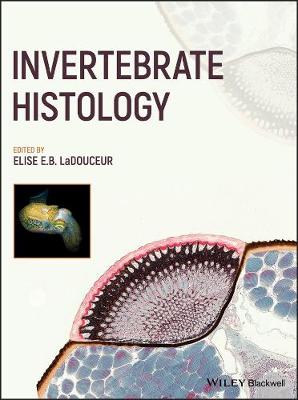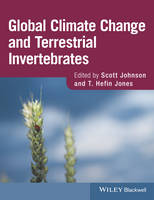Bryozoan Paleobiology
 -15%
portes grátis
-15%
portes grátis
Bryozoan Paleobiology
Taylor, Paul D.
John Wiley and Sons Ltd
07/2020
336
Mole
Inglês
9781118455005
15 a 20 dias
694
Descrição não disponível.
Preface ix
Acknowledgements xi
1 Introduction 1
1.1 Zooids 1
1.2 Colonies 6
1.3 Colony Propagation 8
1.4 Ecology 11
1.5 Taxonomy 14
1.6 Collecting and Studying Fossil Bryozoans 17
2 Biomineralization and Geochemistry 21
2.1 Skeletal Wall Types 22
2.2 Pores and Pseudopores 24
2.3 Skeletal Growth 26
2.4 Skeletal Ultrastructure 26
2.5 Spines 29
2.6 Mineralogy 33
2.7 Geochemistry 37
3 Zooid Morphology and Function 41
3.1 Autozooids 42
3.2 Ontogenetic and Astogenetic Variations 51
3.3 Ancestrulae 56
3.4 Polymorphism 58
3.5 Reproductive Polymorphs 59
3.6 Active Defensive Polymorphs 65
3.7 Structural Polymorphs 72
3.8 Spinozooids 75
3.9 Rhizooids 76
3.10 Cleaning Polymorphs 77
3.11 Locomotory Polymorphs 77
3.12 Microenvironmental Variability 79
3.13 Zooid-level Skeletal Structures 80
3.14 Extrazooidal Structures 87
3.15 The Cormidial 'Zooids' of Advanced Cheilostomes 89
4 Colony Morphology and Function 91
4.1 Colony-form Classifications 91
4.2 Growth and Colony-form 95
4.3 Functional Morphology of Colony-form 102
4.4 Colony Propagation in Lunulitiform Bryozoans 116
4.5 Multizooidal Feeding Morphologies 119
4.6 Life Histories 125
4.7 Colonial Integration 126
4.8 Endolithic and Etching Bryozoans 127
5 Biotic Interactions 131
5.1 Competition 131
5.2 Predation 139
5.3 Symbioses 144
5.4 Bryozoans as Habitat Providers 150
6 Ecology and Palaeoecology 155
6.1 Bryozoan Habitats 155
6.2 Bryozoans in Reefs and Mounds 165
6.3 Colony-form and Palaeoenvironments 170
6.4 Depth Distributions and Palaeobathymetry 172
6.5 Bryozoans as Sediment Producers 176
6.6 Taphonomy 179
6.7 Palaeoclimatology and Zooid Size 181
7 Biogeography 187
7.1 Cosmopolitan vs. Endemic Distributions 187
7.2 Modes of Dispersal 188
7.3 Biogeography of Bryozoans at the Present Day 191
7.4 Latitudinal Diversity Gradient 191
7.5 Palaeobiogeography 193
8 Phylogeny 199
8.1 Relationships with Other Phyla 199
8.2 Inter-relationships of Bryozoan Classes 200
8.3 Inter-relationships of Bryozoan Orders 201
8.4 Morphological Phylogenies 204
8.5 Molecular Phylogenies 205
9 Evolution and Fossil History 211
9.1 Phanerozoic Bryozoan Diversity 211
9.2 Cambrian Bryozoans? 212
9.3 Great Ordovician Biodiversification Event 214
9.4 End-Ordovician Extinction 215
9.5 Devonian Extinctions 215
9.6 Permian Mass Extinctions 216
9.7 Triassic Diversity and Mass Extinction 217
9.8 Jurassic Cyclostome Radiation 217
9.9 Cretaceous-Palaeogene Radiations 218
9.10 End Cretaceous and Danian Extinctions 220
9.11 Convergence 221
9.12 Palaeostomates and Post-Palaeozoic Cyclostomes Compared 227
9.13 Frontal Shield Evolution in Ascophoran Cheilostomes 228
9.14 Cyclostomes vs. Cheilostomes 230
9.15 Colony-forms Through Geological Time 234
9.16 Evolutionary Tempo in Bryozoans 236
10 Prospective Future Research 239
10.1 Biomineralization 240
10.2 Polymorphism 240
10.3 Environmental Distributions of Colony-forms 240
10.4 Taphonomy 241
10.5 Small Palaeozoic Bryozoans 241
10.6 Phylogeny and Classification 241
References 243
Index 311
Acknowledgements xi
1 Introduction 1
1.1 Zooids 1
1.2 Colonies 6
1.3 Colony Propagation 8
1.4 Ecology 11
1.5 Taxonomy 14
1.6 Collecting and Studying Fossil Bryozoans 17
2 Biomineralization and Geochemistry 21
2.1 Skeletal Wall Types 22
2.2 Pores and Pseudopores 24
2.3 Skeletal Growth 26
2.4 Skeletal Ultrastructure 26
2.5 Spines 29
2.6 Mineralogy 33
2.7 Geochemistry 37
3 Zooid Morphology and Function 41
3.1 Autozooids 42
3.2 Ontogenetic and Astogenetic Variations 51
3.3 Ancestrulae 56
3.4 Polymorphism 58
3.5 Reproductive Polymorphs 59
3.6 Active Defensive Polymorphs 65
3.7 Structural Polymorphs 72
3.8 Spinozooids 75
3.9 Rhizooids 76
3.10 Cleaning Polymorphs 77
3.11 Locomotory Polymorphs 77
3.12 Microenvironmental Variability 79
3.13 Zooid-level Skeletal Structures 80
3.14 Extrazooidal Structures 87
3.15 The Cormidial 'Zooids' of Advanced Cheilostomes 89
4 Colony Morphology and Function 91
4.1 Colony-form Classifications 91
4.2 Growth and Colony-form 95
4.3 Functional Morphology of Colony-form 102
4.4 Colony Propagation in Lunulitiform Bryozoans 116
4.5 Multizooidal Feeding Morphologies 119
4.6 Life Histories 125
4.7 Colonial Integration 126
4.8 Endolithic and Etching Bryozoans 127
5 Biotic Interactions 131
5.1 Competition 131
5.2 Predation 139
5.3 Symbioses 144
5.4 Bryozoans as Habitat Providers 150
6 Ecology and Palaeoecology 155
6.1 Bryozoan Habitats 155
6.2 Bryozoans in Reefs and Mounds 165
6.3 Colony-form and Palaeoenvironments 170
6.4 Depth Distributions and Palaeobathymetry 172
6.5 Bryozoans as Sediment Producers 176
6.6 Taphonomy 179
6.7 Palaeoclimatology and Zooid Size 181
7 Biogeography 187
7.1 Cosmopolitan vs. Endemic Distributions 187
7.2 Modes of Dispersal 188
7.3 Biogeography of Bryozoans at the Present Day 191
7.4 Latitudinal Diversity Gradient 191
7.5 Palaeobiogeography 193
8 Phylogeny 199
8.1 Relationships with Other Phyla 199
8.2 Inter-relationships of Bryozoan Classes 200
8.3 Inter-relationships of Bryozoan Orders 201
8.4 Morphological Phylogenies 204
8.5 Molecular Phylogenies 205
9 Evolution and Fossil History 211
9.1 Phanerozoic Bryozoan Diversity 211
9.2 Cambrian Bryozoans? 212
9.3 Great Ordovician Biodiversification Event 214
9.4 End-Ordovician Extinction 215
9.5 Devonian Extinctions 215
9.6 Permian Mass Extinctions 216
9.7 Triassic Diversity and Mass Extinction 217
9.8 Jurassic Cyclostome Radiation 217
9.9 Cretaceous-Palaeogene Radiations 218
9.10 End Cretaceous and Danian Extinctions 220
9.11 Convergence 221
9.12 Palaeostomates and Post-Palaeozoic Cyclostomes Compared 227
9.13 Frontal Shield Evolution in Ascophoran Cheilostomes 228
9.14 Cyclostomes vs. Cheilostomes 230
9.15 Colony-forms Through Geological Time 234
9.16 Evolutionary Tempo in Bryozoans 236
10 Prospective Future Research 239
10.1 Biomineralization 240
10.2 Polymorphism 240
10.3 Environmental Distributions of Colony-forms 240
10.4 Taphonomy 241
10.5 Small Palaeozoic Bryozoans 241
10.6 Phylogeny and Classification 241
References 243
Index 311
Este título pertence ao(s) assunto(s) indicados(s). Para ver outros títulos clique no assunto desejado.
cormidial zooids; post-palaeozoic cyclostomes; future research; reefs; paleobiology;bryozoan;zooidal polymorphism; macroevolutionary trends;Ordovician fossils
Preface ix
Acknowledgements xi
1 Introduction 1
1.1 Zooids 1
1.2 Colonies 6
1.3 Colony Propagation 8
1.4 Ecology 11
1.5 Taxonomy 14
1.6 Collecting and Studying Fossil Bryozoans 17
2 Biomineralization and Geochemistry 21
2.1 Skeletal Wall Types 22
2.2 Pores and Pseudopores 24
2.3 Skeletal Growth 26
2.4 Skeletal Ultrastructure 26
2.5 Spines 29
2.6 Mineralogy 33
2.7 Geochemistry 37
3 Zooid Morphology and Function 41
3.1 Autozooids 42
3.2 Ontogenetic and Astogenetic Variations 51
3.3 Ancestrulae 56
3.4 Polymorphism 58
3.5 Reproductive Polymorphs 59
3.6 Active Defensive Polymorphs 65
3.7 Structural Polymorphs 72
3.8 Spinozooids 75
3.9 Rhizooids 76
3.10 Cleaning Polymorphs 77
3.11 Locomotory Polymorphs 77
3.12 Microenvironmental Variability 79
3.13 Zooid-level Skeletal Structures 80
3.14 Extrazooidal Structures 87
3.15 The Cormidial 'Zooids' of Advanced Cheilostomes 89
4 Colony Morphology and Function 91
4.1 Colony-form Classifications 91
4.2 Growth and Colony-form 95
4.3 Functional Morphology of Colony-form 102
4.4 Colony Propagation in Lunulitiform Bryozoans 116
4.5 Multizooidal Feeding Morphologies 119
4.6 Life Histories 125
4.7 Colonial Integration 126
4.8 Endolithic and Etching Bryozoans 127
5 Biotic Interactions 131
5.1 Competition 131
5.2 Predation 139
5.3 Symbioses 144
5.4 Bryozoans as Habitat Providers 150
6 Ecology and Palaeoecology 155
6.1 Bryozoan Habitats 155
6.2 Bryozoans in Reefs and Mounds 165
6.3 Colony-form and Palaeoenvironments 170
6.4 Depth Distributions and Palaeobathymetry 172
6.5 Bryozoans as Sediment Producers 176
6.6 Taphonomy 179
6.7 Palaeoclimatology and Zooid Size 181
7 Biogeography 187
7.1 Cosmopolitan vs. Endemic Distributions 187
7.2 Modes of Dispersal 188
7.3 Biogeography of Bryozoans at the Present Day 191
7.4 Latitudinal Diversity Gradient 191
7.5 Palaeobiogeography 193
8 Phylogeny 199
8.1 Relationships with Other Phyla 199
8.2 Inter-relationships of Bryozoan Classes 200
8.3 Inter-relationships of Bryozoan Orders 201
8.4 Morphological Phylogenies 204
8.5 Molecular Phylogenies 205
9 Evolution and Fossil History 211
9.1 Phanerozoic Bryozoan Diversity 211
9.2 Cambrian Bryozoans? 212
9.3 Great Ordovician Biodiversification Event 214
9.4 End-Ordovician Extinction 215
9.5 Devonian Extinctions 215
9.6 Permian Mass Extinctions 216
9.7 Triassic Diversity and Mass Extinction 217
9.8 Jurassic Cyclostome Radiation 217
9.9 Cretaceous-Palaeogene Radiations 218
9.10 End Cretaceous and Danian Extinctions 220
9.11 Convergence 221
9.12 Palaeostomates and Post-Palaeozoic Cyclostomes Compared 227
9.13 Frontal Shield Evolution in Ascophoran Cheilostomes 228
9.14 Cyclostomes vs. Cheilostomes 230
9.15 Colony-forms Through Geological Time 234
9.16 Evolutionary Tempo in Bryozoans 236
10 Prospective Future Research 239
10.1 Biomineralization 240
10.2 Polymorphism 240
10.3 Environmental Distributions of Colony-forms 240
10.4 Taphonomy 241
10.5 Small Palaeozoic Bryozoans 241
10.6 Phylogeny and Classification 241
References 243
Index 311
Acknowledgements xi
1 Introduction 1
1.1 Zooids 1
1.2 Colonies 6
1.3 Colony Propagation 8
1.4 Ecology 11
1.5 Taxonomy 14
1.6 Collecting and Studying Fossil Bryozoans 17
2 Biomineralization and Geochemistry 21
2.1 Skeletal Wall Types 22
2.2 Pores and Pseudopores 24
2.3 Skeletal Growth 26
2.4 Skeletal Ultrastructure 26
2.5 Spines 29
2.6 Mineralogy 33
2.7 Geochemistry 37
3 Zooid Morphology and Function 41
3.1 Autozooids 42
3.2 Ontogenetic and Astogenetic Variations 51
3.3 Ancestrulae 56
3.4 Polymorphism 58
3.5 Reproductive Polymorphs 59
3.6 Active Defensive Polymorphs 65
3.7 Structural Polymorphs 72
3.8 Spinozooids 75
3.9 Rhizooids 76
3.10 Cleaning Polymorphs 77
3.11 Locomotory Polymorphs 77
3.12 Microenvironmental Variability 79
3.13 Zooid-level Skeletal Structures 80
3.14 Extrazooidal Structures 87
3.15 The Cormidial 'Zooids' of Advanced Cheilostomes 89
4 Colony Morphology and Function 91
4.1 Colony-form Classifications 91
4.2 Growth and Colony-form 95
4.3 Functional Morphology of Colony-form 102
4.4 Colony Propagation in Lunulitiform Bryozoans 116
4.5 Multizooidal Feeding Morphologies 119
4.6 Life Histories 125
4.7 Colonial Integration 126
4.8 Endolithic and Etching Bryozoans 127
5 Biotic Interactions 131
5.1 Competition 131
5.2 Predation 139
5.3 Symbioses 144
5.4 Bryozoans as Habitat Providers 150
6 Ecology and Palaeoecology 155
6.1 Bryozoan Habitats 155
6.2 Bryozoans in Reefs and Mounds 165
6.3 Colony-form and Palaeoenvironments 170
6.4 Depth Distributions and Palaeobathymetry 172
6.5 Bryozoans as Sediment Producers 176
6.6 Taphonomy 179
6.7 Palaeoclimatology and Zooid Size 181
7 Biogeography 187
7.1 Cosmopolitan vs. Endemic Distributions 187
7.2 Modes of Dispersal 188
7.3 Biogeography of Bryozoans at the Present Day 191
7.4 Latitudinal Diversity Gradient 191
7.5 Palaeobiogeography 193
8 Phylogeny 199
8.1 Relationships with Other Phyla 199
8.2 Inter-relationships of Bryozoan Classes 200
8.3 Inter-relationships of Bryozoan Orders 201
8.4 Morphological Phylogenies 204
8.5 Molecular Phylogenies 205
9 Evolution and Fossil History 211
9.1 Phanerozoic Bryozoan Diversity 211
9.2 Cambrian Bryozoans? 212
9.3 Great Ordovician Biodiversification Event 214
9.4 End-Ordovician Extinction 215
9.5 Devonian Extinctions 215
9.6 Permian Mass Extinctions 216
9.7 Triassic Diversity and Mass Extinction 217
9.8 Jurassic Cyclostome Radiation 217
9.9 Cretaceous-Palaeogene Radiations 218
9.10 End Cretaceous and Danian Extinctions 220
9.11 Convergence 221
9.12 Palaeostomates and Post-Palaeozoic Cyclostomes Compared 227
9.13 Frontal Shield Evolution in Ascophoran Cheilostomes 228
9.14 Cyclostomes vs. Cheilostomes 230
9.15 Colony-forms Through Geological Time 234
9.16 Evolutionary Tempo in Bryozoans 236
10 Prospective Future Research 239
10.1 Biomineralization 240
10.2 Polymorphism 240
10.3 Environmental Distributions of Colony-forms 240
10.4 Taphonomy 241
10.5 Small Palaeozoic Bryozoans 241
10.6 Phylogeny and Classification 241
References 243
Index 311
Este título pertence ao(s) assunto(s) indicados(s). Para ver outros títulos clique no assunto desejado.





